The best 55-inch 4K TVs for all budgets, all tested by our experts
The best 55-inch 4K TVs deliver a great blend of price-to-performance – here are our top picks
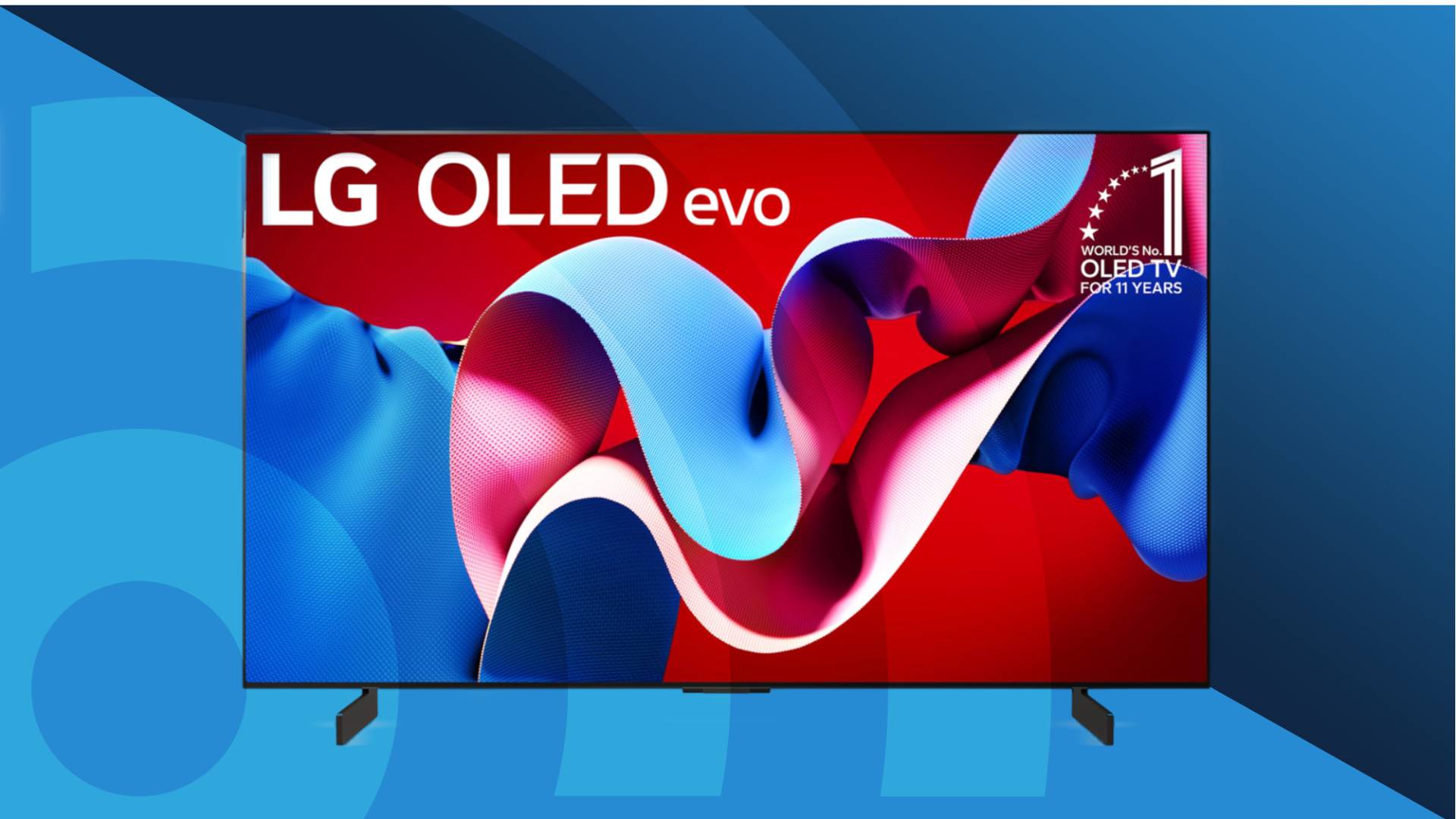
The best 55-inch 4K TVs are a great size for those stepping into the idea of a big, beautiful home theater. 55 inches is the amount of space where 4K resolution, advanced HDR tech and super-smooth gaming features all really step into their own, on a screen big enough to show them off.
The best 55-inch TVs also offer the widest range of pricing and screen technology options – it's where you'll find the best OLED TVs and mini-LED high-end options, affordable QLED, and super-budget standard LED TVs. This is because it's such a popular size – almost everything in our guide to the best TVs has a 55-inch option.
This means that choosing the best 55-inch TV for you can feel overwhelming, but a) we're here to help whittle it down to the most worthwhile, and b) this fierce competition means you tend to find fantastic discounts on 55-inch TVs a lot of the year, as companies battle to stand out. We've tested and reviewed every one of the TVs here ourselves, and the list is based on comparing them to the competition and suggesting only the better options when balancing performance against price.
That means we have some older models here – after price cuts since their launch, they might now be the best bang for buck, even when newer models have launched. Gamers will be happy to find that most of the best gaming TVs come in 55-inch sizes too.
Read more

I'm TechRadar's Managing Editor for Entertainment, and I've been in tech publishing for over 15 years, including for TechRadar in its earliest days. I've been writing about the latest TVs and soundbars since 2017, and I worked directly with our reviewers and editors to put together the recommendations in this guide, based on our real-world experience with these TVs.
September 13, 2025
Replaced the Samsung S95D with the Samsung S95F as our 'best premium OLED' pick, based on our recent testing. Also added the LG B5 in our 'best budget OLED' slot, replacing the LG B4.
The top 55-inch TVs, chosen by our testers
Why you can trust TechRadar
Our favorite 55-inch TV you can buy today





Specifications
Reasons to buy
Reasons to avoid
✅ You want an “affordable” OLED TV
The LG C4 is less expensive than flagship OLED TVs but still offers premium performance and features
✅ You want nearly every feature imaginable: This has unmatched gaming features, excellent streaming and customization options, great connectivity… it's future-proof
❌ You want the brightest possible TV
The LG C4 is brighter than most older OLEDs, but mini-LED sets and flagship OLED TVs are notably brighter
❌ You are expecting stellar audio for the money: The LG C4 has lots of sound settings, but it is still lacking compared to higher-end TVs or a soundbar
The LG C4 offers a basically unbeatable mix of features and performance, and manages to do it at a price that’s easier on the wallet than flagship OLED TVs from LG and Samsung.
LG’s C4 has a new Alpha 9 AI Processor 4K Gen7 processor that, among other picture-enhancing features, provides a Brightness Booster that delivers a real increase in picture brightness over previous LG C-series TVs. HDR support includes Dolby Vision, HDR10, and HLG, and the C4 has a new Dolby Vision Filmmaker Mode preset that gives you a director-approved picture without having to fuss with picture settings.
We were incredibly impressed with the picture here in our testing, and highlighted that it can make rich colors look "startlingly vivid", and that it could deliver extremely fine detail with realism. It handles motion very well too, including nearly impeccable judder-reduction in movies.
We found that the LG C4’s built-in 2.2-channel speakers do a more than adequate job of providing spacious Dolby Atmos audio, partly thanks to virtual 9.1.2-channel upmixing, though you’ll get a better experience by pairing it with one of the best soundbars. The C4 is also an unbeatable gaming TV, with all of its four HDMI 2.1 ports providing 4K 120Hz, variable refresh rate, auto low latency mode, and quick media switching. There's also 144Hz support for PC gaming.
It's the consummate all-rounder, and is a very reasonable price, bringing high-end pictures and features for a more mid-range price.
Read our full LG C4 review
Our favorite budget TV in the US
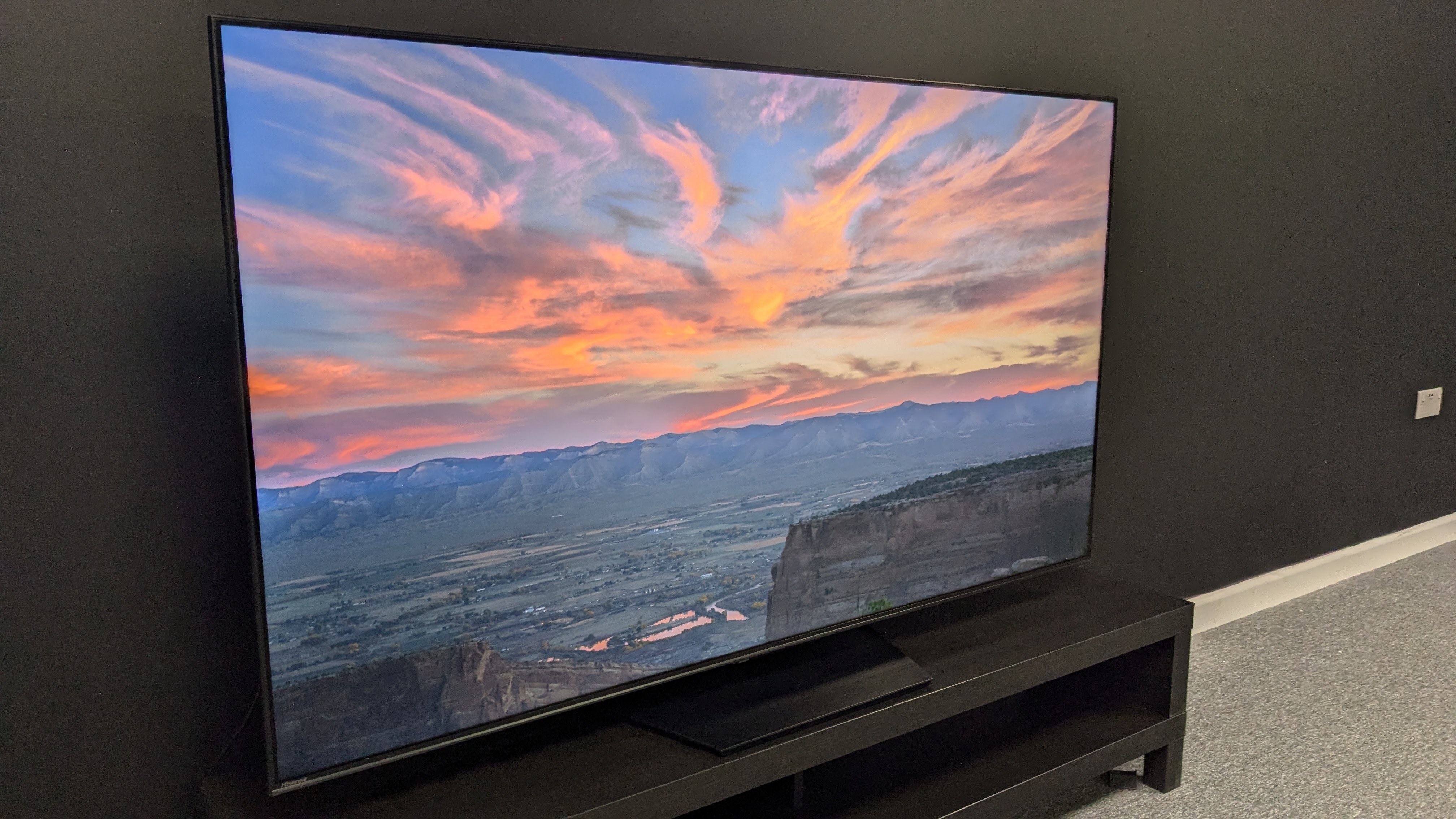
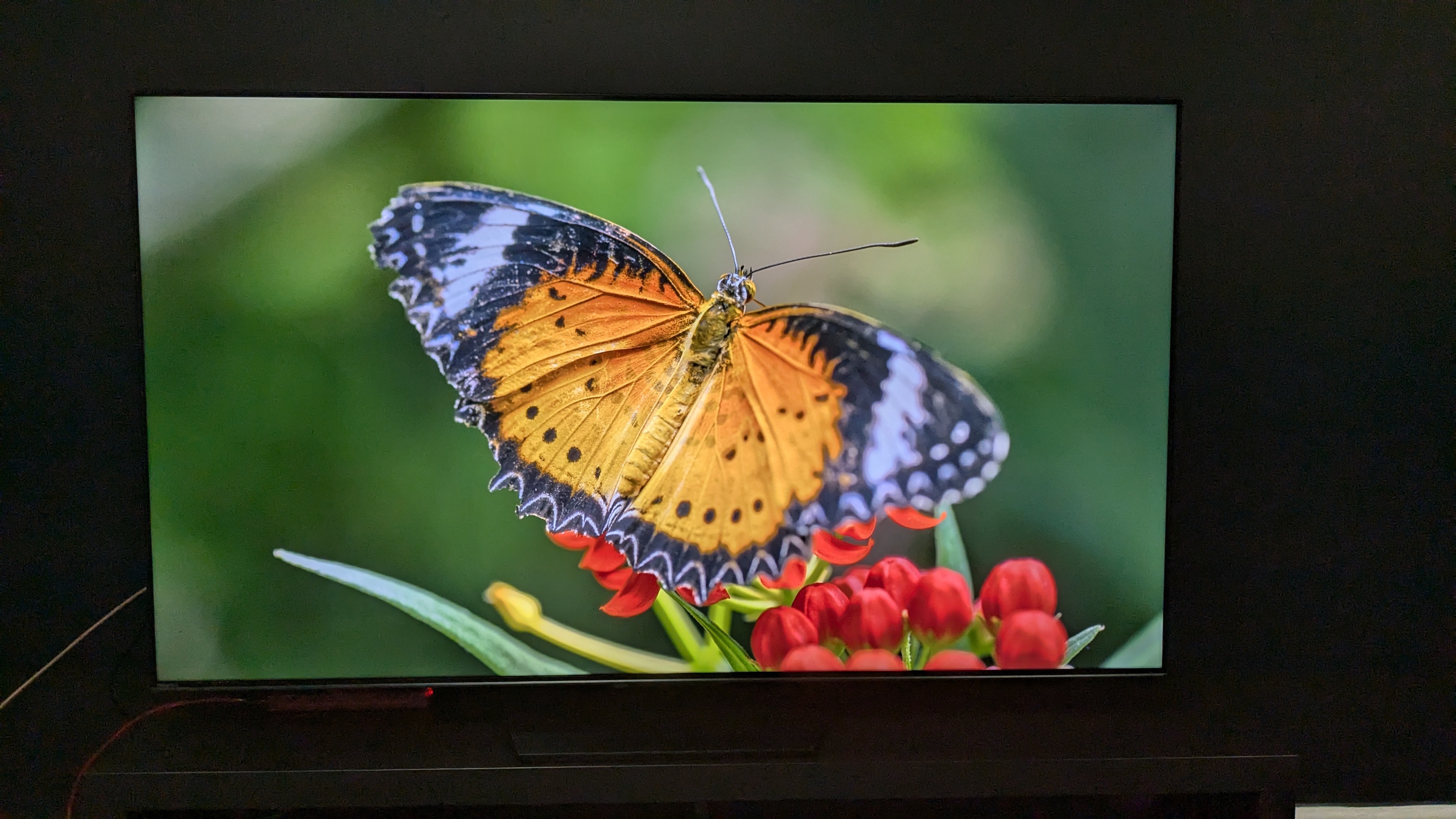

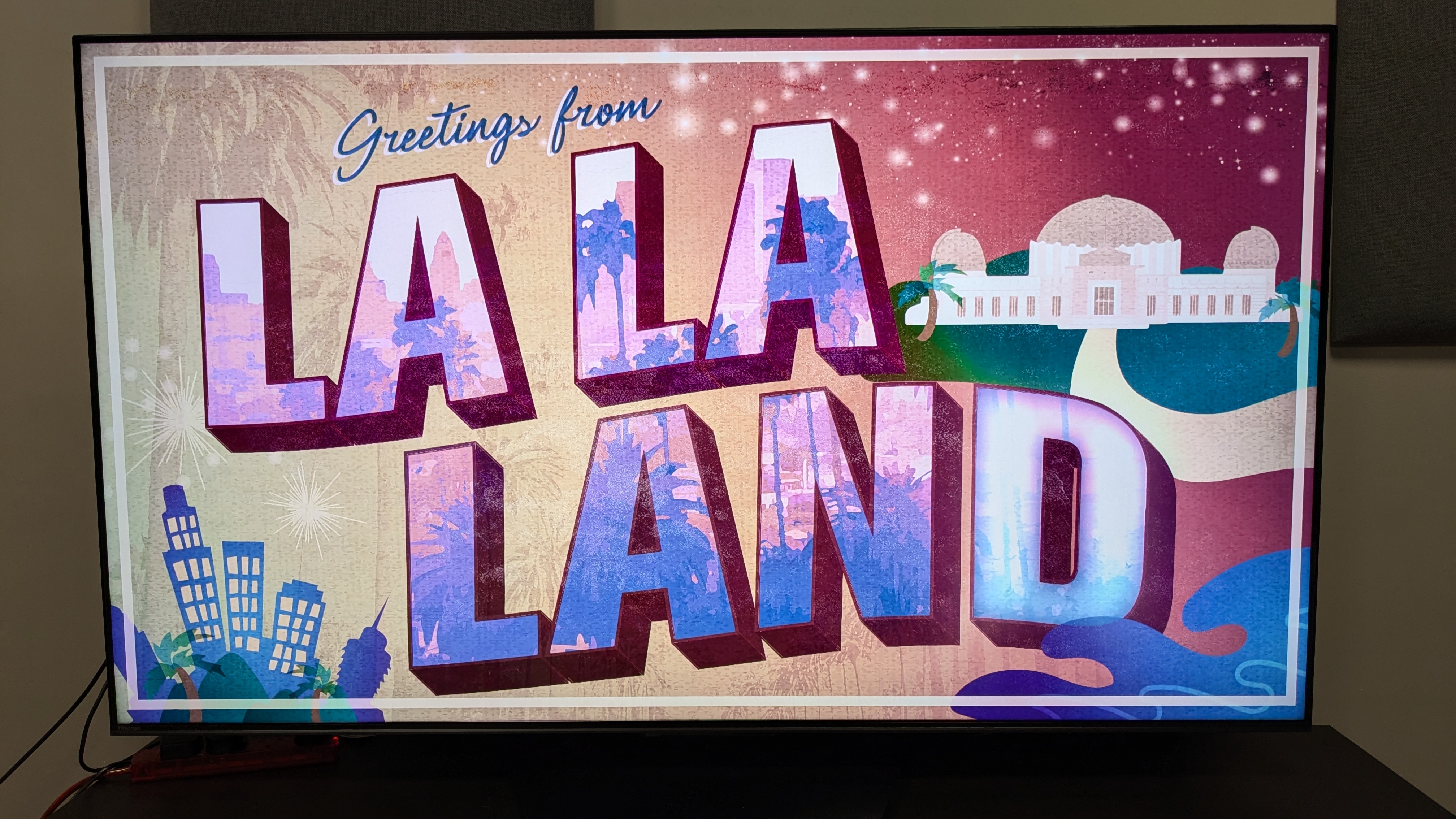

Specifications
Reasons to buy
Reasons to avoid
✅ You want a great gaming TV: The U7N offers high-level gaming features including 4K 120Hz, 144Hz, VRR, and Dolby Vision gaming, making it ideal for PS5 and Xbox Series X.
✅ You want a high-value TV: The U7N’s performance and features rival more expensive sets from Sony and Samsung.
❌ You don't want to mess with picture settings: Getting the best picture out of the U7N requires a good amount of adjustment, which means wading through menus.
❌ You want great built-in sound: While the U7N’s sound quality is adequate, it lacks the spaciousness and punch you’ll hear in TVs from brands like Sony.
The Hisense U7N is a mid-range mini-LED model in the company’s TV lineup and it offers impressive performance at a budget-friendly price, though it costs more in the UK than in the US. Bold colors and natural-looking detail are the main stories here, though it also has plenty of gaming features including 4K 144Hz support.
With a plain but solid design, Dolby Atmos and DTS:X soundtrack support, and the Google TV (VIDAA in the UK) smart TV platform for streaming, the U7N is well-featured for a TV at its price. Along with 144Hz support, it offers Dolby Vision gaming, VRR including AMD FreeSync Premium Pro and Nvidia GSync, and ALLM. Its HDMI 2.1 port count tops out at two, but that limitation is to be expected from a budget TV.
In our Hisense U7N review, we said it “looked very good across the board, showing dynamic and vibrant colors.” Brightness was somewhat limited compared to higher-end mini-LED TVs, including the company’s own Hisense U8K model, and picture settings needed adjustment to get the best image quality, but we found it “hard to argue just how many bases the Hisense U7N covers at the price.”
At under $800 for a 55-inch model, the Hisense U7N brings high-level competition to other TVs on this list, including the Samsung Q80C we selected as our best mid-range 55-inch TV. If you want one of the best mini-LED TVs for less, the U7N is well worth the money.
Read our full Hisense U7N review
Our favorite budget TV in the UK





Specifications
Reasons to buy
Reasons to avoid
✅ You want an excellent value TV: With a mini-LED panel and good suite of gaming features for an affordable price, the C805 is excellent value.
✅ You want a superb picture for the money: Contrast, details, colors and even black levels all look brilliant on the C805 – especially considering the price.
❌ You want cinematic built-in sound: The C805's speakers are fine for day-to-day to use, but a limited soundstage really holds them back.
❌ You need good viewing angles: If you're watching off-center, you'll notice that C805's contrast fades.
The TCL C805 demonstrates outstanding value – at under £600 for its 55-inch size, you get a mini-LED backlight for better local dimming, a good number of gaming features including 4K 120Hz and VRR support, and the Google TV smart TV platform. If you're in the UK, you can't get much better value than the C805 in a 55-inch size.
In our review of the C805, we were seriously impressed by its picture quality, noting that it delivers crisp, refined textures with plenty of detail along with deeper than expected black levels and very good contrast. It also delivered vivid colors with plenty of punch. While its motion could be better and viewing angles are somewhat limted, we said "at this price range, it's hard to be disappointed with the C805's picture".
The C805 is also a great, budget gaming option with two HDMI 2.1 ports that support 4K, 120Hz, VRR (AMD FreeSync Premium Pro) and Dolby Vision gaming all included. Performance is also smooth and judder-free and while its 13.5ms input lag time isn't as good as the very best gaming TVs, it will be good enough for the vast majority of gamers.
The C805's built-in sound lacks the same wow factor that its picture does – although speech and bass are clear and punchy, its soundstage is very limited overall. But with the money you're saving on this TV thanks to its low price tag, you'll have more than enough left over to get a soundbar.
Read our full TCL C805 review
Our favorite elite 55-inch TV


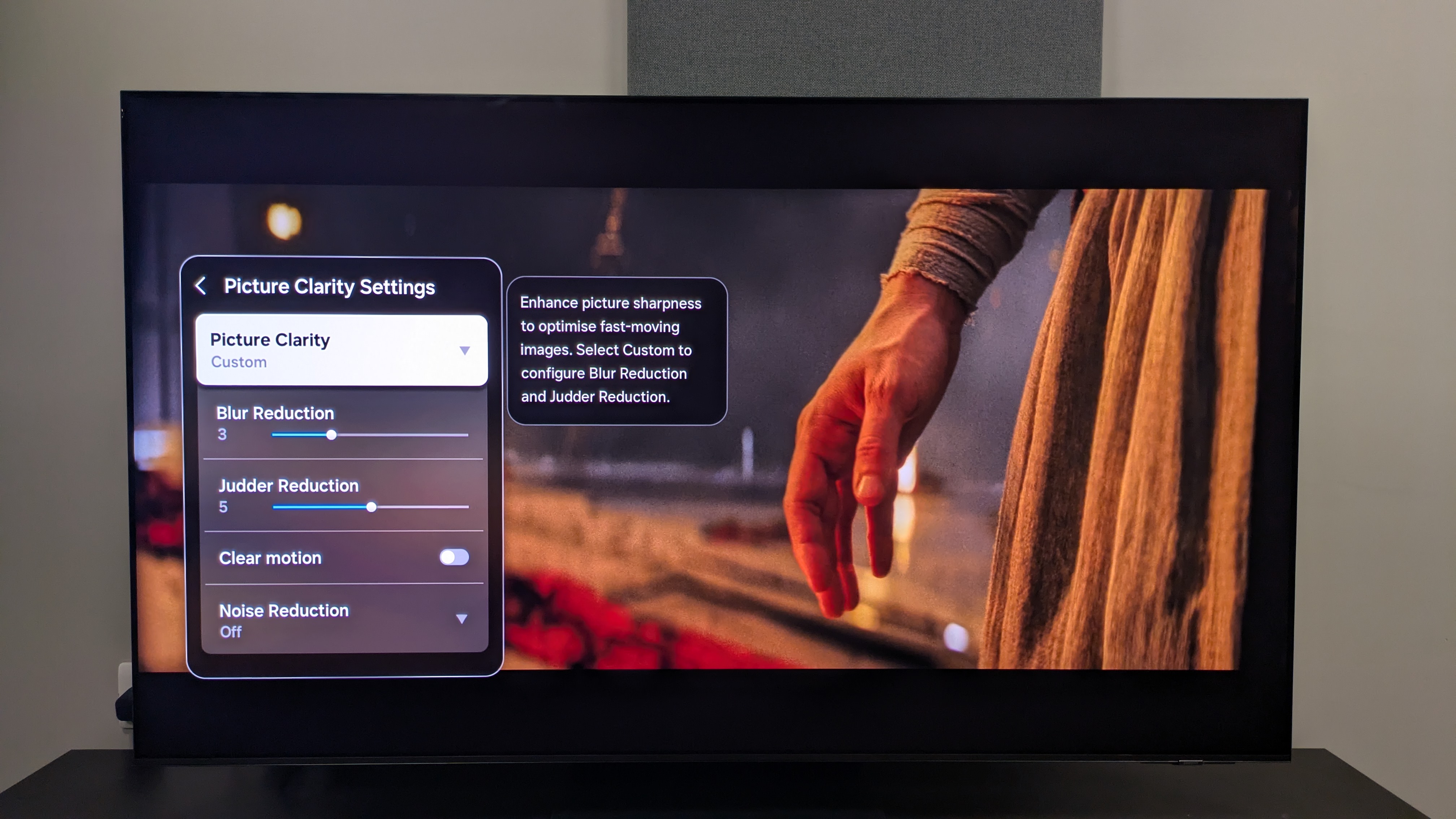



Specifications
Reasons to buy
Reasons to avoid
❌ You can’t afford high-end: This is a flagship OLED TV, so it’s no surprise it comes with a premium price tag. It’s worth it, but it’ll outstretch most budgets.
❌ You want a perfect picture out of the box: A minor complaint, but you do need to tweak Filmmaker Mode in bright viewing conditions.
✅ You watch TV in a bright room: The Glare Free 2.0 screen here eliminates reflections, perfect if you might want to put it in light, bright spaces.
✅ You love a colorful picture: The color display here is stunning, especially with HDR sources. Along with high brightness, the picture experience of the S95F is truly fantastic.
The Samsung S95F is the brand’s latest flagship OLED TV, delivering a premium set of features with the top performance to match. It also manages to push brightness to impressive new highs, making it our top premium 55-inch OLED.
The S95F introduces a second-gen version of Samsung’s OLED Glare Free screen technology, improving on the original from the S95D that came before it by combining glare reduction with even better picture contrast in bright rooms. With its next-gen QD-OLED panel, the S95F delivers richer brightness, superb black levels and realistic details and textures that give movies and TV shows incredible depth.
The One Connect box keeps external connections tidy while making the TV’s razor thin design possible. The updated Tizen smart interface feels slicker than ever, now with a Samsung Art Store subscription option too. Gamers get plenty of features, 4K at 165Hz, VRR with AMD FreeSync Premium Pro, ALLM and HDR10+ gaming across four HDMI 2.1 ports, plus an ultra-low 9.5ms input lag. There’s also Samsung’s Game Hub for cloud gaming, as well as plenty of AI features that promise to fine-tune picture and sound.
Built-in audio is punchy and accurate with a strong level of bass for a slim set. Design-wise, the S95F is stunning, it’s sharp, sleek and undeniably premium. It’s not flawless. Black levels aren’t perfect and the high price will put it out of reach to many people. But the Samsung S95F is still an outstanding OLED and certainly deserves its place as our top premium pick.
Read our full Samsung S95F review
The top 55-inch TV for sports



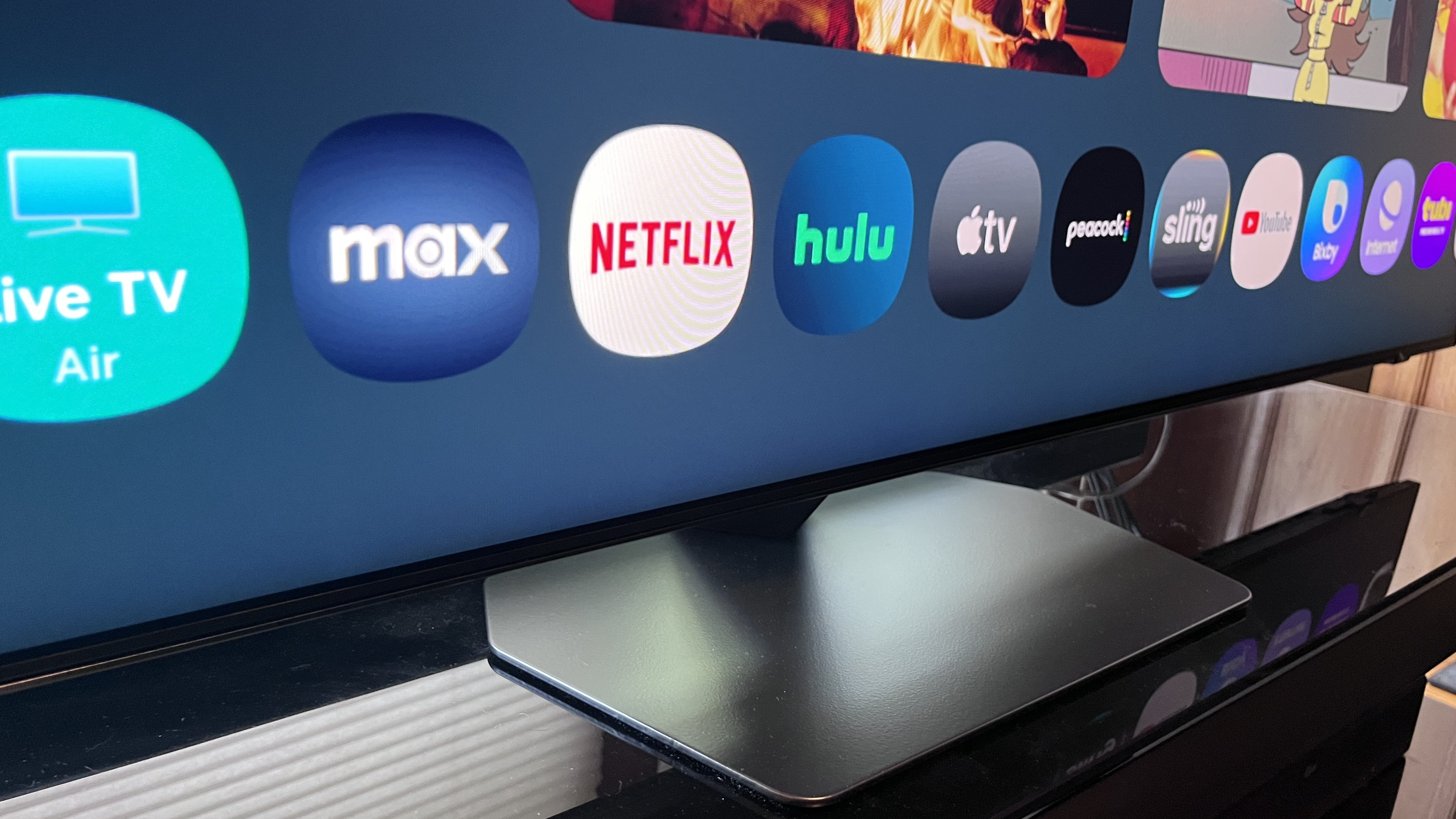

Specifications
Reasons to buy
Reasons to avoid
✅ You have a bright viewing room: The QN90F's high full-screen brightness and anti-glare screen let it handle brighter viewing rooms with ease.
✅ You're a sports fan: High brightness, great picture quality and brilliant motion handling make the QN90F ideal for sports.
❌ You want the cheapest mini-LED: Budget competition from the likes of Hisense and TCL offer many similar features to the QN90F.
❌ You want Dolby Vision: The QN90F doesn't support the Dolby Vision HDR format, so if you need it, look elsewhere.
The Samsung QN90F delivers superb brightness, sharp motion handling and updated glare-free screen tech, making it an ideal pick for sports fans, especially if you’re watching in bright rooms during the day. Colors are vivid, contrast is powerful, and fine detail pops, so it’s great for more than just sports, too.
Replacing the QN90D, the QN90F is our new top pick for sports viewing, and it improves on its predecessor in almost every way. One standout upgrade is Samsung’s new NQ4 AI Gen3 Processor, which brings features like 4K AI Upscaling Pro and, crucially for sports, AI Motion Enhancer Pro – designed to reduce blur in fast-paced content.
It’s also one of the best gaming TVs we’ve tested. With four HDMI 2.1 ports, 4K 165Hz support, FreeSync Premium Pro, HGiG, and an ultra-low input lag of 9.5ms, it’s built for high-performance gaming. Samsung’s Gaming Hub is a handy bonus, and the punchy, precise picture takes the whole experience up a notch. Audio is “clean and well-defined” even at high volumes, making commentary and crowd noise crystal clear during big matches.
While OLEDs still hold the crown for pure picture quality and motion control, the QN90F’s brightness and anti-glare screen deliver comparable sports performance. You’ll find cheaper options that handle sports well, but at this size and spec, the QN90F is hard to beat.
Read our full Samsung QN90F review
A cheap but stunning 55-inch OLED TV

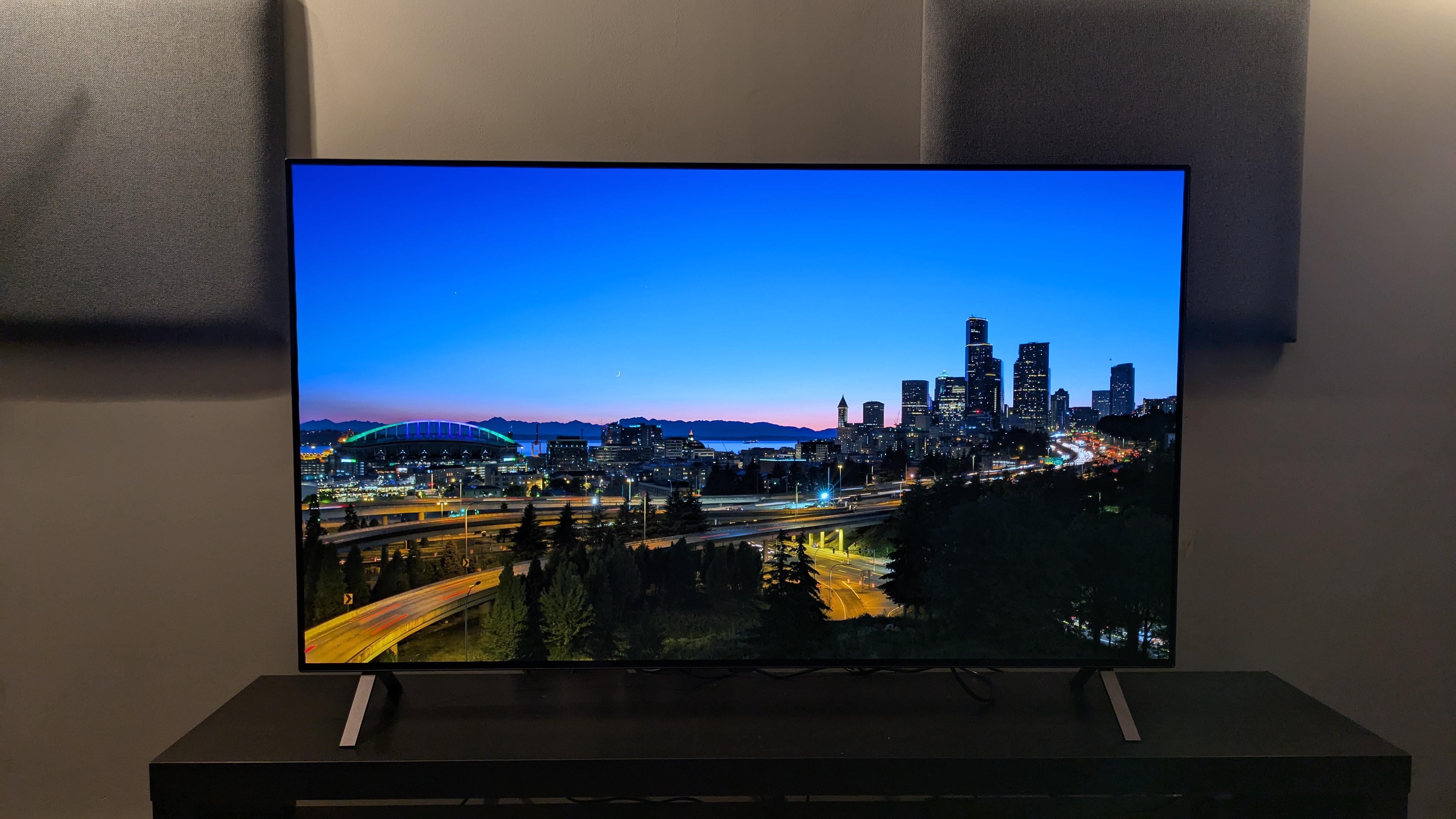




Specifications
Reasons to buy
Reasons to avoid
✅ You want great picture quality: Expect contrast-rich images, vibrant colors and realistic textures. It looks more premium than the budget price suggests.
✅ You want a solid gaming TV: A full suite of gaming features and impressively responsive performance make it a strong choice for gamers.
❌ You want to watch in bright rooms: Brightness is only middling and the screen can be reflective, so it performs best in dimmer conditions.
❌ You’d prefer solid built-in sound: The audio isn’t terrible but it doesn’t live up to the picture quality. You’ll need a soundbar for the best experience.
LG’s B5 is one of the cheapest OLED TVs you can buy, yet it still delivers impressive picture quality and excellent gaming support, making it our top budget pick.
In our LG B5 review, we found its pictures to be crisp and contrast-rich, with vibrant colors and realistic textures that look more premium than its entry-level status would suggest. Detail levels are strong and although it’s not the brightest TV around, it can still produce a cinematic image, as long as the conditions are right. The trade-off comes in bright rooms, where its middling brightness and reflective screen can make darker scenes lose their impact. It’s best watching it in dimly lit environments instead.
The B5 is well stocked with gaming features, carrying four HDMI 2.1 ports that support 4K 120Hz, VRR (AMD FreeSync Premium, Nvidia G-Sync), ALLM and Dolby Vision gaming. It also runs on LG’s latest webOS 25 smart platform, which adds new AI tools like AI search, AI Concierge and an improved AI chatbot, while keeping navigation fast and user-friendly.
The B5 doesn’t bring big changes over last year’s B4, and its built-in audio doesn’t live up to the picture, so a soundbar is recommended. But with its mix of OLED picture quality, gaming specs and new smart AI features at this price, the LG B5 is the best budget OLED TV you can buy.
Read our full LG B5 review
A great mid-range gaming 55-inch TV




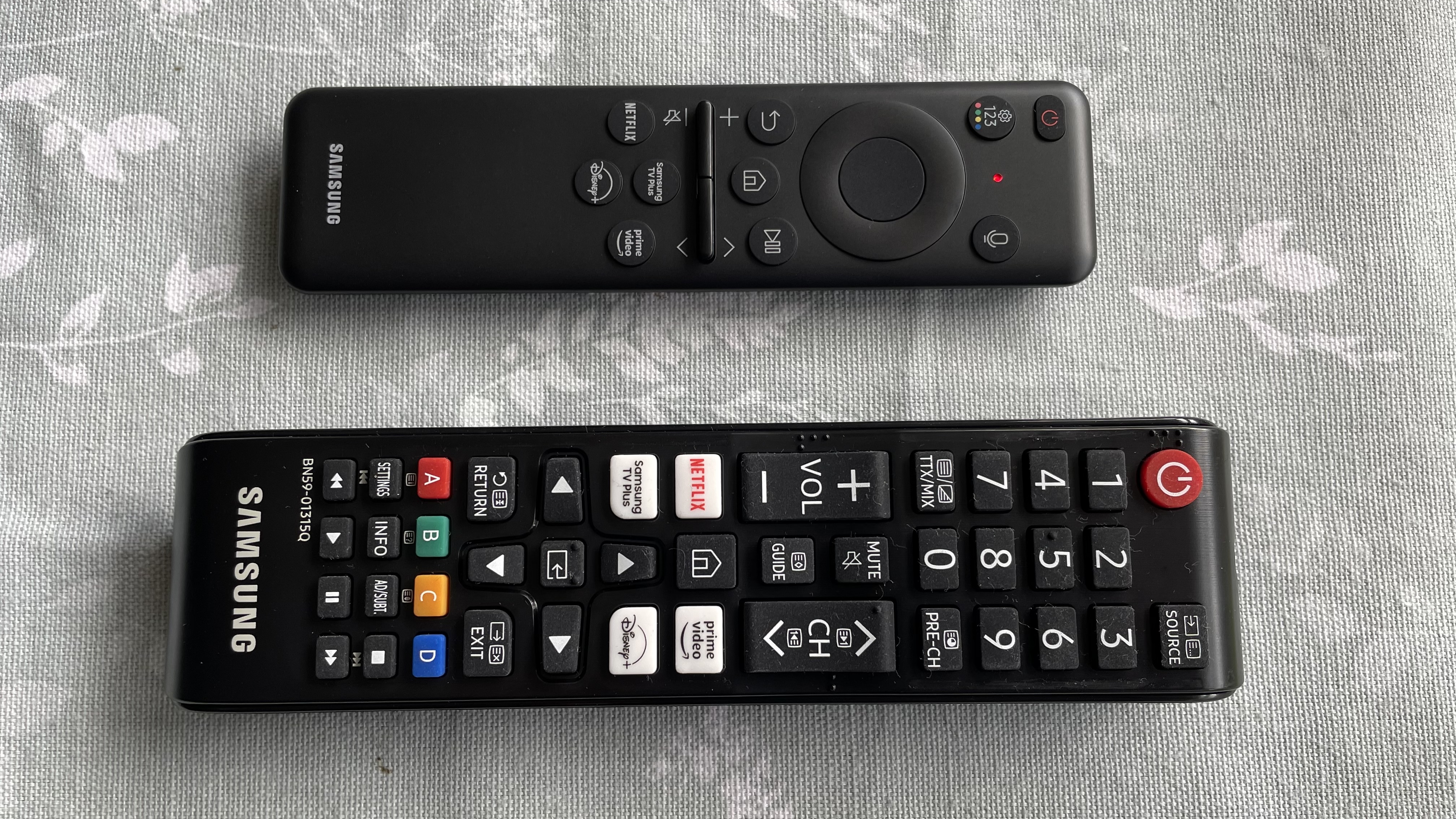
Specifications
Reasons to buy
Reasons to avoid
✅ You want a good range of gaming features: With four HDMI 2.1 ports that offer 4K 120Hz, VRR and ALLM, the Q80D is well-equipped for gaming.
✅ You want an excellent picture: The Q80D's picture is excellent at this price, showing rich contrast, crisp textures and bold color.
❌ You want the best picture out-of-the-box: The Q80D's color in its picture presets can be a little off, so some tweaking is required to get it looking right.
❌ You want Dolby Vision: Like all Samsung TVs, the Q80D doesn't support Dolby Vision for either games or movies and TV shows.
The Samsung Q80D is a high-quality QLED TV, with a superb picture, surprisingly strong sound, and great gaming features and performance, all of which would suggest a far more pricey TV than this affordable, mid-range Samsung.
First and foremost, the Q80D's picture quality is nothing short of brilliant. We were suitably impressed with its bold, vibrant colors and razor-sharp details, but even more so with its deep black levels and rich contrast. In our review we also noted its effective backlight control, saying that "the local dimming system that’s largely responsible for this black level depth works its magic while throwing up impressively few backlight blooming or clouding issues."
Gamers will be pleased by the Q80D's list of features at this mid-range price, with four HDMI 2.1 ports that all support 4K 120Hz, VRR (in both HDMI and AMD FreeSync Premium Pro formats) and ALLM. The Q80D's performance is also great, with a low 9.8ms input lag time and a bold, colorful picture to match.
The Q80D's sound is also effective – a rarity at this price range. We found during our testing that the Q80D not only had a wide soundstage, but effective sound placement around the screen and beyond. It also delivers suitably punchy bass and clear speech. We said the Q80D is "one of the best-sounding TVs in Samsung’s 2024 range" – no mean feat considering it sits below several more premium mini-LED (Neo QLED) and OLED models.
At this price, very few other 55-inch sets will top the Q80D, which almost disguises itself as a premium TV in the body of a mid-range model.
Read our full Samsung Q80D review
The elite 55-inch TV designed for wall-mounting
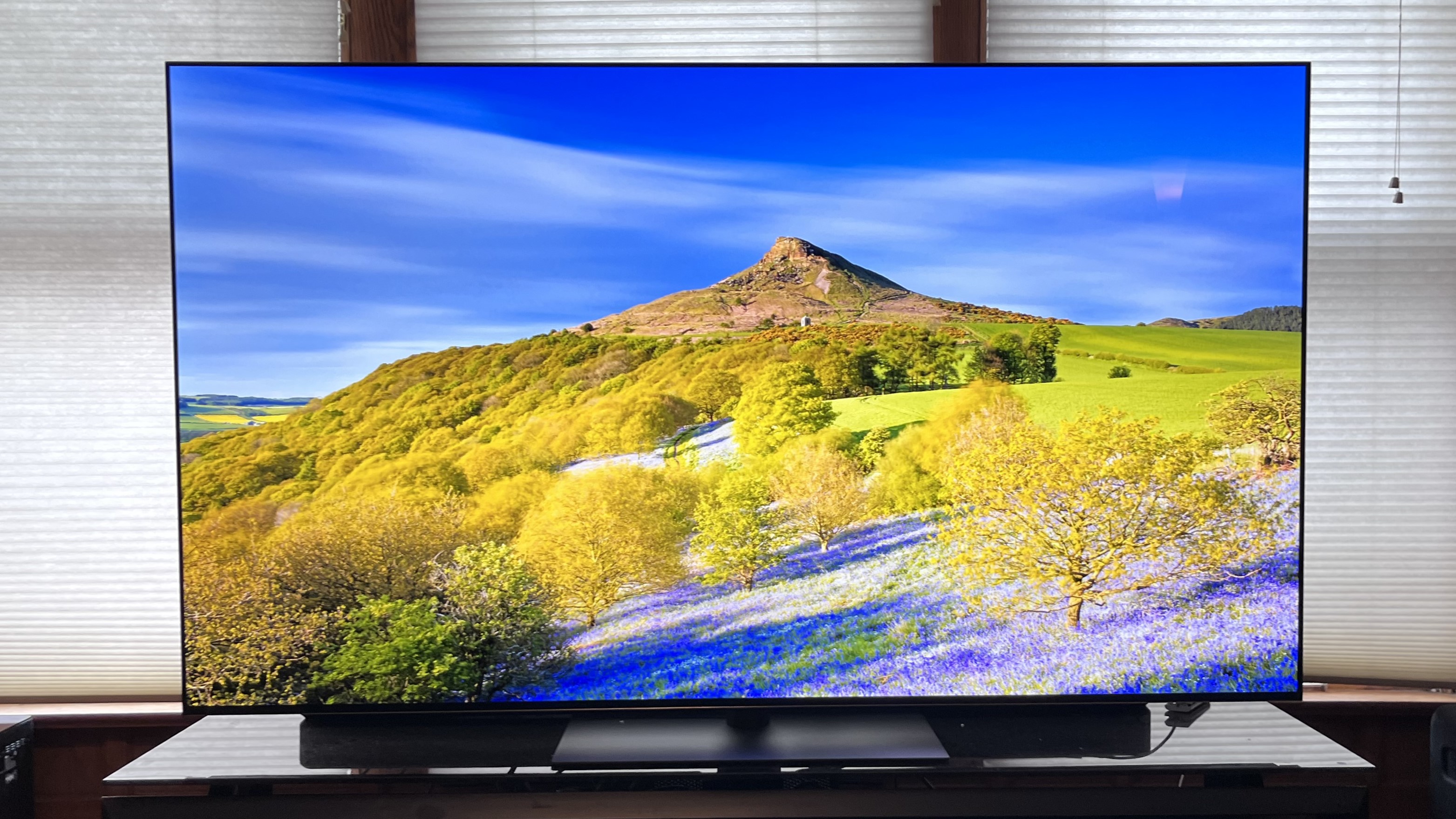




Specifications
Reasons to buy
Reasons to avoid
✅ You want a TV for wall-mounting: With a slim, wall-hugging design, the G5 is designed for wall-mounting and it comes with a specially designed bracket in-box.
✅ You like to watch in bright rooms: The G5’s peak brightness rivals mini-LED TVs, and its anti-glare screen and Filmmaker Ambient Light Mode both help improve picture quality in brighter rooms.
❌ You don’t want a soundbar: The G5’s 4.2-channel speakers deliver good sound, but bass is limited and there's no DTS support.
❌You want to save money: LG’s mid-range C5 series OLED TVs aren’t as bright, but they cost less while providing excellent overall picture quality and features.
The LG G5 raises the bar for OLED TV brightness, delivering a substantially brighter picture than its LG G4 predecessor. LG managed this by using a Primary RGB Tandem structure OLED display panel in the G5, a new design that employs individual red, green, and blue layers to produce light. Not only is LG’s flagship G5 brighter, but it also has better color detail and improved screen glare rejection for viewing in bright rooms.
A new feature found in the G5 is Filmmaker Ambient Light Mode, which uses the TV’s built-in sensor to adjust brightness based on room lighting without sacrificing picture accuracy. LG’s latest Alpha 11 AI processor Gen 2 brings with it a range of AI enhancements for picture and sound, and the new webOS smart TV interface provides deeper levels of customization, including voice recognition for tailoring picture and sound settings along with content recommendations, for each user in your household.
The best thing about the G5’s picture is that it looks great across a range of lighting conditions, including bright rooms – a new frontier for OLED TVs. This makes it a great option for watching sports, but darker content like movies also looks good when viewed in brighter rooms, and with the lights dimmed, the picture has a powerful, almost 3D-like quality. As we noted in our LG G5 review: “The refined shadow detail gave the picture a powerful sense of depth that, for me, really drove home the point of why you would spend top dollar for a premium OLED TV like the G5.”
LG also made a point of bringing the best gaming features to the G5, including four HDMI 2.1 ports with 4K 165Hz, FreeSync Premium and Nvidia G-Sync support. The G5’s super-slim, wall-hugging design is the main reason we’ve selected it here as our best TV for wall-mounting (a wall-mount is included), but LG’s extra-cost pedestal stand gives you the option to also install it on a TV stand.
Save on electronics with our LG coupons. Find top deals on LG TVs, appliances, and more to enhance your home tech.
Read our full LG G5 review
More 55-inch TVs we've tested
Hisense U6N: Hisense's cheapest mini-LED TV is now astonishingly cheap, particularly in the US, and provides bright images with good contrast. It lacks a 120Hz screen for gaming, so that's a key thing you're losing – but for movies on a budget, it's very good. It's just not quite as good on value as TCL C805 in the UK, while the small price step up to the U7N in the US is small enough that we recommend most people should do that. But here's our Hisense U6N review to read through, because it does a very good job in its own right.
Hisense U8N: This is a super-bright mini-LED TV that’s excellent for both sports and movies, and also has great built-in sound. The main reason why the U8N got bumped by the Samsung Q80D for the mid-range spot is that it has less extensive gaming features than the Samsung, and 55 inches is a popular screen size for gaming. It's a fantastic TV, though, and you can read all about that in our full Hisense U8N review.
Load the next products...
Panasonic Z95A: This is the company’s flagship OLED TV, and it has a bright, contrast-rich picture that makes it a strong rival for both our premium OLED pick, the Samsung S95D, and our best for wall-mounting pick, the LG G4. Another main attraction of the Z95A is its built-in 5.1.2-channel speaker array, which is powerful and immersive enough that you can easily use the TV without an external soundbar. Unfortunately, the 55-inch version of the Z95A is only available in the UK, though its availability status in the US could change. But the other TVs are also better value overall, in our opinion. Still, we raved about the picture and sound of the Z95A in our full Panasonic Z95A review.
Samsung Q60D: This budget QLED TV performs well, but you simply get much brighter images with better contrast and more features, especially for gaming, from the Hisense and TCL models mentioned here generally. Our Samsung Q60D review highlighted that it has far better picture quality than you might expect from its specs, though, so if the price is right and you want a Samsung set, it's a strong pick.
TCL C855: This is only available in the UK and Europe, but it's an extremely good-value mini-LED TV. Again, it falls in a slightly awkward place in terms of value, but we think it's very much worth looking at, especially because it has some really aggressive discounts. Here's our TCL C855 review for the in-depth verdict.
Amazon Fire TV Omni Mini-LED: Amazon's first mini-LED TV delivers great picture quality and is surprisingly good for sports, as we found in our Amazon Mini-LED review. It has a good stock of gaming features and, unsurprisingly, uses the Fire TV Smart TV platform. It's also priced similarly to many other mini-LED sets.
Philips OLED809: Only available in the UK, the OLED809 is a brilliant mid-range OLED TV that offers great picture and sound quality, along with Philips' immersive Ambilight feature. We rated the OLED809 highly in our Philips OLED809 review, but it's marginally more expensive than its main rival, the LG C4.
New 55-inch TVs coming in 2025
At the recent CES trade show in Las Vegas, TV makers announced a wide range of new TVs that will arrive in 2025. Many of those sets will be reviewed by TechRadar, and you can expect several to be added to this guide as the year progresses. LG announced the LG C5, a successor to our best overall pick, the LG C4. The new model essentially has the same specs as the C4, and it turned out to have mostly similar picture quality in our LG C5 review. The company also announced a new flagship G5 series OLED with a new, significantly brighter panel design, and that model has since been added to this guide as the 'Best for wall-mounting' option. LG also confirmed that a new budget B5 series OLED is coming in 2025, and we expect to see similar specs and performance from that series as the current B4.
Samsung’s CES announcements include the S95F and S90F OLED TVs. The first is a flagship model that uses a next-generation version of the Glare Free anti-screen reflection tech found in the Samsung S95D and has 4K 165Hz support for PC gaming, and the second is a more basic mid-range model. Samsung’s forthcoming mini-LED TVs include the new QN90F series, which has been added to this guide. That model also features a Glare Free screen and 165Hz gaming support, and there’s also a new mid-range QN80F series and entry-level QN70F series.
TCL announced a new mini-LED TV series, the QM6K. The company says its new sets will be much brighter than last year’s already very bright models and feature 4K 144Hz and 1080p 288Hz VRR support for gaming.
Panasonic showed off it new Z95B OLED TV, which features a new 'Primary RGB Tandem Panel’ with similar tech as that found in LG’s G5 OLED. Last year’s Panasonic Z95A was only available in a 65-inch size in the US, but the new model will be sold in 55-, 65- and 77-inch sizes and features a new 5.1.2-channel built-in speaker configuration tuned by Panasonic sister brand Technics. Panasonic also announced the W95B mini-LED TV series, which comes with a mini-LED panel with up to 2.5x more dimming zones compared to last year's W95A, according to the company, and there’s also a new entry-level W70B LED TV series.
How to choose the best 55-inch TV
What is the best 55-inch smart TV?
Right now, the best 55-inch TV available, that sits at the top of our list, is the LG C4. It's such a fantastic combination of high-end picture quality with effectively every feature you could need, but for a more mid-range price. It's a future-proof set that will last you for years.
How much should you pay for a 55-inch TV?
55-inch TVs can be very cheap, with some budget LCD models costing just $400 / £400 – though that number will double for mid mid-tier options, if not triple and quadruple for high-end screens with OLED panels or Mini LED backlighting. A brand new 55-inch OLED will usually cost around $1,799 / £1,799, for example.
Is a 55-inch smart TV big enough?
55-inch TVs are the flagship size for today's televisions. That makes it pretty much the most common sizing option. It's a kind of happy medium between the best 43-inch TVs and the best 75-inch TVs.
It's worth thinking hard about how important screen size is to you, though. You'll likely pay less for smaller screens, and we're seeing more and more option among the best 50-inch TVs that offer premium screen tech, including OLED.
However, larger screens are increasingly becoming the norm for those that can fit them into their home, and mass production means a big-screen display isn't quite the bank-breaking cost that it used to be.
A bigger screen means more detail that's more easily visible at a larger distance, and a better sense of immersion. Keep in mind, though, that picture defects are also more visible at larger sizes, so you should make sure that you're getting a TV good enough to warrant a step-up in screen size.
What should I look for in a 55-inch TV?
At this ample size, you should absolutely be looking for some good features – lest you get stuck with a large screen that simply blows up artefacts and visual defects.
OLED or mini-LED screens are well worth getting at this size, without the truly extravagant price points of larger models – 55 inch TVs offer a smart, well-judged entry point to premium TV tech. For LCD models, you want to make sure you're getting direct full array lighting rather than the edge lighting still found on some budget sets, which limits the consistency of brightness across the screen.
Otherwise, 4K HDR is a given, and you may want to check that HDMI 2.1 is included if you're partial to gaming, with the VRR (variable refresh rate) and ALLM (auto low latency mode) support usually thrown in.
What’s the difference between an OLED 55-inch TV and an LED one?
There are several major differences between OLED and LED TVs. The main examples? Brightness, black levels, response times while playing video games and the potential risk of burn-in, in the case of the former TV tech.
Overall, we consider OLEDs to be vastly better than LED sets. Yet if you’re on a tight budget, LED TVs are definitely still worth considering, as they’re normally a good deal cheaper.
Why do we prefer OLED TVs? Their picture quality is just a whole lot better than the average LED set in key areas. While the best LED TVs are generally brighter than traditional OLED panels, this gap has shortened considerably over the past couple of years. Thanks to the advent of the likes of Samsung’s QD-OLEDs (quantum dot technology) and LG’s MLA screens (Micro Lens Array), the best OLED TVs are now able to get startlingly bright.
Older WOLED TVs generally don’t get as bright as LED televisions, though. If you can’t afford a QD-OLED or one of LG or Panasonic’s more recent MLA sets - like the LG G4 OLED - you may be better off buying an LED TV if you do a lot of daytime viewing/gaming.
The biggest advantage OLEDs have up their sleeve is unquestionably their superb contrast, which is achieved thanks to their perfect black levels. As OLED TVs can turn off every single one of their on-screen pixels, you’re left with effortlessly inky blacks, which make them ideal for viewing movies at night in a dark room. By contrast, LED TVs have to rely on dimming zones in darker areas of on-screen content, and quite simply, these never fully convince as true black.
It’s worth noting OLED technology does have one significant Achilles heel that LED TVs rarely suffer from: burn-in. This is a longstanding panel defect whereby if you leave a static image on an OLED TV for hours at a time (like, say, the HUD in a video game), it can leave a permanent ghostly artefact/shadow on the screen. Many modern OLED TVs have built-in features to help combat this problem - like pixel cleaning cycles - but this is still an area where LED has the advantage.
Finally, If you’re a gamer, OLED usually has the edge on LED, as often the best OLED TVs have slighter faster response times than LED sets. In turn, this makes playing video games feel a little more responsive to play.
What should I look for in a 55-inch TV for gaming?
As we’ve just touched on, response times are the most key element when it comes to picking up a 55-inch TV if you’re a big gamer. The majority of modern TVs have dedicated Game Modes that slash input lag, making your favourite PS5 or Xbox Series X titles feel buttery smooth.
In general, LG makes the best gaming TVs thanks to the firm’s proprietary ‘Game Optimizer’. Easily accessed via its dedicated dashboard, it helps further reduce input lag via sliders that make in-game actions on a controller feel more smoother.
LG’s gaming-focused optimiser also sports features such as VRR (Variable Refresh Rate), ALLM (Automatic Low Latency Mode), Nvidia G-Sync and AMD FreeSync Premium - all of which further smooth out gameplay. Though it’s worth noting these features are also available in TVs from the likes of Samsung and Sony, too.
VRR helps make frame rate dips less noticeable, leading to in-game experiences that feel more consistent. G-Sync and FreeSync essentially perform the same function by, you guessed it, ‘syncing’ a game’s frames per seconds (FPS) to match your TV’s refresh rate.
How we test the best 55-inch TVs
We use the same methods to test the best 55-inch TVs as we do across all our other TV buying guides. This testing criteria is broken down by picture quality (looking at particular elements such as contrast, color and so on), audio quality of built-in speakers, gaming features, smart TV platform, ease of use, design and value for money. We base our testing on subjective opinion and objective measurements of the picture quality, which we take using specialized equipment.
Firstly, we’ll run in the TVs across various types of AV sources, such as broadcast, streaming and 4K Blu-ray. During this time, we’ll cycle through the different picture presets found on each set, such as Standard, Movie and Sport, to establish what we see as the most accurate for that set. We then watch the same movies, TV shows and so on again, making notes of how they compare to each other.
When analyzing picture quality, we’ll use a mixture of sources such as 4K Blu-ray and streaming to look at color reproduction and accuracy, contrast and black levels, and textures. We’ll then use lower-resolution sources such as broadcast TV and DVD to test a TV’s upscaling effectiveness.
We’ll also look at how a TV handles black uniformity (how well it can display dark tones across the screen evenly), especially on LCD based models. This is when we consider how effective the backlight is and if it suffers from any backlight blooming. We’ll also test motion, not just for 24fps movies but also for sports viewing, looking out for judder and blur – and seeing how effective a TVs motion settings are for reducing this.
After we’ve conducted subjective tests surrounding picture quality, smart TV platform, sound quality and so on, we move onto objective tests using specialized equipment to measure color accuracy, brightness, grayscale and more, recording results through Portrait Displays' Calman calibration software.
The first area we will usually test is brightness. We use a test pattern generator and colorimeter to measure a TV’s brightness levels across a variety of window sizes, from 1% all the way to 100% (full screen brightness). The more significant window sizes include 10%, which will usually tell you what a TV’s peak brightness is and how HDR highlights will look, and 100%, which will indicate the TV’s full screen brightness and how it can handle longer periods of brightness across the whole screen (which is often important when viewing sports). Full screen brightness generally also tells us how effective a TV will be at handling reflections. We do these tests to not only test a TV’s backlight, but also to measure our results against any figures claimed by the manufacturer. Brightness tests are conducted in light controlled rooms to prevent any external light sources affecting results.
Color reproduction, in both SDR and HDR, is also tested as we look at each TV’s accuracy to its source and how wide a color gamut it can display on screen. We won’t just look at color though, we also look at grayscale to test how accurately a TV can display black tones and just how effective its contrast is as well.
When it comes to gaming tests, we use the Leo Bodnar 4K HDMI input lag tester to test the latency time that a TV’s processing adds when displaying video games. We’ll also test the effectiveness of a TV’s Game Mode (if it has one), which is often used to adjust the TV’s settings to its most optimum when gaming. We also look out for a number of features such as how many HDMI 2.1 ports a TV has and whether it supports VRR, 4K 120Hz, ALLM and more.
When conducting these tests, we aim to keep everything as consistent as possible in our TV testing lab but it’s worth noting that some reviewers will work in different environments with different setups. In those instances, we always make sure that our reviewers have the same level of equipment and conduct the same tests.
Latest updates to the best 55-inch TV list
September 13, 2025
Replaced the Samsung S95D with the Samsung S95F as our 'best premium OLED' pick, based on our recent testing. Also added the LG B5 in our 'best budget OLED' slot, replacing the LG B4.
July 14, 2025
Replaced the Samsung 55QN90D with the Samsung 55QN90F as our ‘Best for sports’ pick, based on recent testing.
May 8, 2025
Swapped LG G4 with the new LG G5 as 'Best for wall-mounting' option due to its superior overall picture quality.
Read more updates…
March 10, 2025
Added in a gallery of images for each entry. Added more TVs to our section of 'Other TVs we've tested'.
February 13, 2025
Added new sections, 'What’s the difference between an OLED 55-inch TV and an LED one?' and 'What should I look for in a 55-inch TV for gaming?' to 'How to Choose the best 55-inch TV'.
January 15, 2025
Added section 'New 55-inch TVs coming in 2025' detailing new TV announcements made at CES.
December 20, 2024
Checked all products against our latest reviews, and added more information about other sets we've tested to add more context.
November 25, 2024
Added an 'Also consider' section describing otherwise worthy TVs not included in this guide, and why they didn't make it in.
November 13, 2024
Added section on Black Friday 2024 55-inch TV deals.
September 19, 2024
Replaced the Samsung QN90C with the Samsung QN90D as 'best for sport'.
August 21, 2024
Replaced the Samsung Q80C with the Samsung Q80D as 'best mid-range'.
July 2, 2024
Hisense U7N introduced as 'best budget (US)'. Amazon Omni QLED became 'best budget (UK).
June 3, 2024
Replaced LG C3 with new LG C4 as "Best for versatility" due to improved picture brightness and gaming features.
May 3, 2024
Replaced Samsung S95C with Samsung S95D for best premium OLED, due to improved picture/features.
March 28, 2024
Added testing data graphs for all TVs, to make it easy to compare them in key areas.
March 5, 2024
Expanded the 'How We Test' section to give more detail on how the TVs in this guide are tested.
January 31, 2024
Replaced the LG A2 with the LG B3 as 'best budget OLED' due to dwindling stock levels of the A2.
January 4, 2024
Added LG G3 as the 'best for wall mounting'. Checked the rest of list against our latest reviews.
December 13, 2023
Combined best budget UK and US to best budget and chose the Amazon Fire TV Omni QLED. Removed Sony A95K and 'best for image quality' category. Renamed Samsung S95C as 'best premium OLED'. Replaced Samsung Q80B with Samsung Q80C as 'best mid-range' due to stock levels.
Looking to save money on a Samsung product? Check out our Samsung coupons for the latest deals on top-rated tech and gadgets.
Sign up for breaking news, reviews, opinion, top tech deals, and more.

Matt is TechRadar's Managing Editor for Entertainment, meaning he's in charge of persuading our team of writers and reviewers to watch the latest TV shows and movies on gorgeous TVs and listen to fantastic speakers and headphones. It's a tough task, as you can imagine. Matt has over a decade of experience in tech publishing, and previously ran the TV & audio coverage for our colleagues at T3.com, and before that he edited T3 magazine. During his career, he's also contributed to places as varied as Creative Bloq, PC Gamer, PetsRadar, MacLife, and Edge. TV and movie nerdism is his speciality, and he goes to the cinema three times a week. He's always happy to explain the virtues of Dolby Vision over a drink, but he might need to use props, like he's explaining the offside rule.